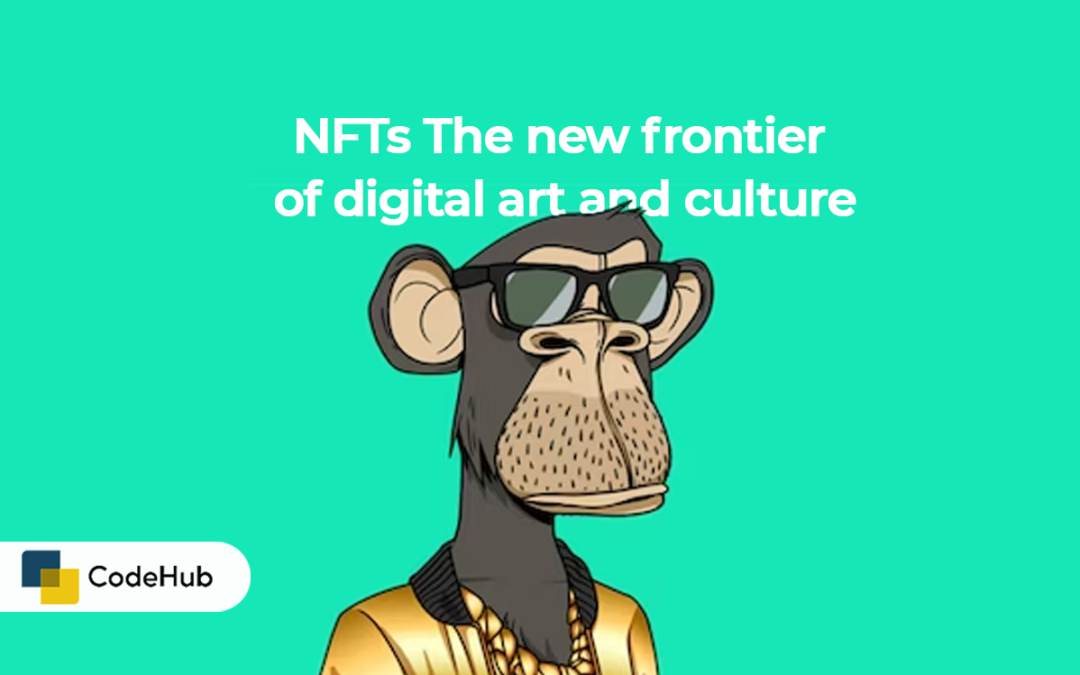Have you ever wondered what it would be like to own a piece of digital art, music, or video that is unique, authentic, and scarce? Or how about a digital collectible that represents your favorite sports star, celebrity, or meme? If so, you might be interested in NFTs, or non-fungible tokens.
NFTs are a type of cryptocurrency that can represent any digital or real-world asset that is one-of-a-kind and cannot be duplicated or exchanged. Unlike regular cryptocurrencies, such as Bitcoin or Ethereum, which are fungible and interchangeable, NFTs are non-fungible and indivisible. This means that each NFT has its own identity, history, and value, and can be verified and traced on a blockchain.
NFTs can be used to create, buy, sell, and trade digital art and collectibles, such as paintings, animations, songs, videos, games, trading cards, tickets, and more. NFTs can also be used to represent real-world assets, such as land, property, or identity, and enable new ways of ownership, access, and governance.
NFTs are not a new concept, but they have gained a lot of popularity and attention in recent years, thanks to some high-profile sales and events. For example, in March 2021, a digital collage by the artist Beeple sold for a whopping $69 million at Christie’s auction house, making it the third most expensive artwork by a living artist ever sold. In the same month, Twitter CEO Jack Dorsey sold his first tweet as an NFT for $2.9 million, donating the proceeds to charity. And in April 2021, the National Basketball Association (NBA) launched NBA Top Shot, a platform that allows fans to buy and sell video highlights of their favorite players and moments as NFTs.
But why are NFTs so appealing and valuable? What makes them different from other forms of digital media or content? And what are the benefits and challenges of NFTs for artists, collectors, and consumers?
One of the main reasons why NFTs are attractive is that they provide a way to prove the authenticity, ownership, and scarcity of digital assets, which are otherwise easy to copy, share, or pirate. By using blockchain technology, NFTs can ensure that each digital asset is unique and has a clear provenance and history, which can increase its value and demand. For example, anyone can download or stream a song or a video online, but only one person can own the original NFT of that song or video, and have the exclusive rights to display, use, or resell it.
Another reason why NFTs are appealing is that they enable new forms of creativity, expression, and culture, especially in the digital realm. NFTs can allow artists to create and showcase their work in innovative and immersive ways, such as using 3D, virtual reality, or augmented reality. NFTs can also allow artists to interact and collaborate with their fans and communities, and reward them with exclusive access, content, or experiences. For example, some NFTs can have interactive or dynamic features, such as changing their appearance or behavior based on external factors, such as time, weather, or user input. Some NFTs can also have social or gamified features, such as allowing users to vote, comment, or play with them.
NFTs can also create new opportunities and challenges for the art and collectible markets, both online and offline. NFTs can lower the barriers to entry and increase the accessibility and diversity of the art and collectible markets, by allowing anyone to create, discover, and trade digital assets, without intermediaries, fees, or geographical limitations. NFTs can also create new sources of income and value for artists and collectors, by allowing them to benefit from the secondary market, royalties, or donations. For example, some NFT platforms or protocols can enable artists to receive a percentage of the sales every time their NFTs are resold, or allow collectors to donate a portion of their profits to a cause of their choice.
However, NFTs also pose some risks and challenges, such as legal, ethical, and environmental issues. For instance, NFTs can raise questions about the intellectual property rights, ownership, and usage of digital assets, especially when they involve existing or derivative works, such as memes, remixes, or fan art. NFTs can also raise concerns about the security, privacy, and regulation of digital assets, especially when they involve sensitive or personal data, such as identity, biometrics, or health records. Moreover, NFTs can have a significant environmental impact, due to the high energy consumption and carbon emissions of some blockchain networks, such as Ethereum, which use a proof-of-work consensus mechanism.
NFTs are a fascinating and evolving phenomenon, that have the potential to transform the digital art and culture landscape, and create new possibilities and challenges for artists, collectors, and consumers. NFTs are not just a fad or a hype, but a reflection and a manifestation of the human desire to create, own, and collect unique and meaningful things, in the physical and the digital world.

